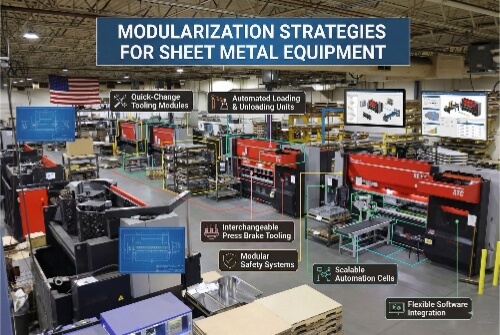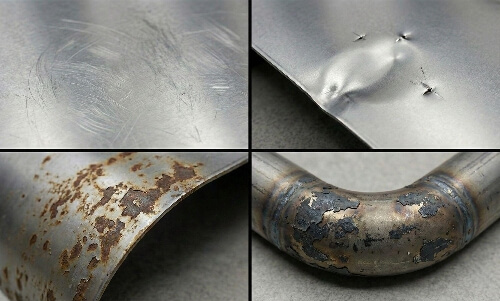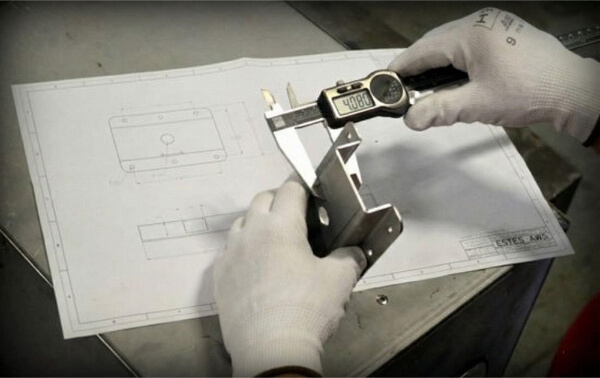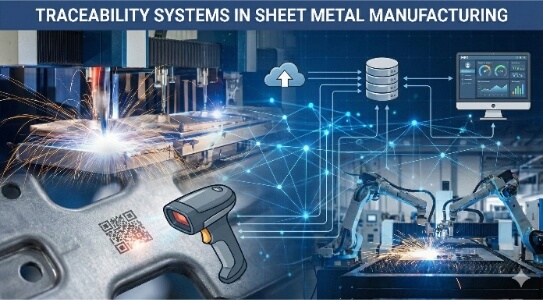تواجه العديد من الشركات المصنعة تحديات عند الانتقال من النموذج الأولي إلى الإنتاج في تصنيع المعادن. يمكن للتأخيرات الزمنية وعدم اتساق الجودة وارتفاع التكاليف أن تعرقل حتى أكثر المشاريع الواعدة. من خلال استراتيجيات التخطيط والتنفيذ المناسبة، يمكنك تجنب هذه المزالق الشائعة وتحقيق نتائج ناجحة لاحتياجات تصنيع المعادن الخاصة بك.
سنستكشف الطرق التي أثبتت جدواها والنصائح العملية لمساعدتك على تحسين رحلة تصنيع المعادن بدءًا من المفهوم الأولي وحتى الإنتاج النهائي. تأتي هذه الأفكار من سنوات من الخبرة العملية في العمل مع مشاريع التصنيع المتنوعة.
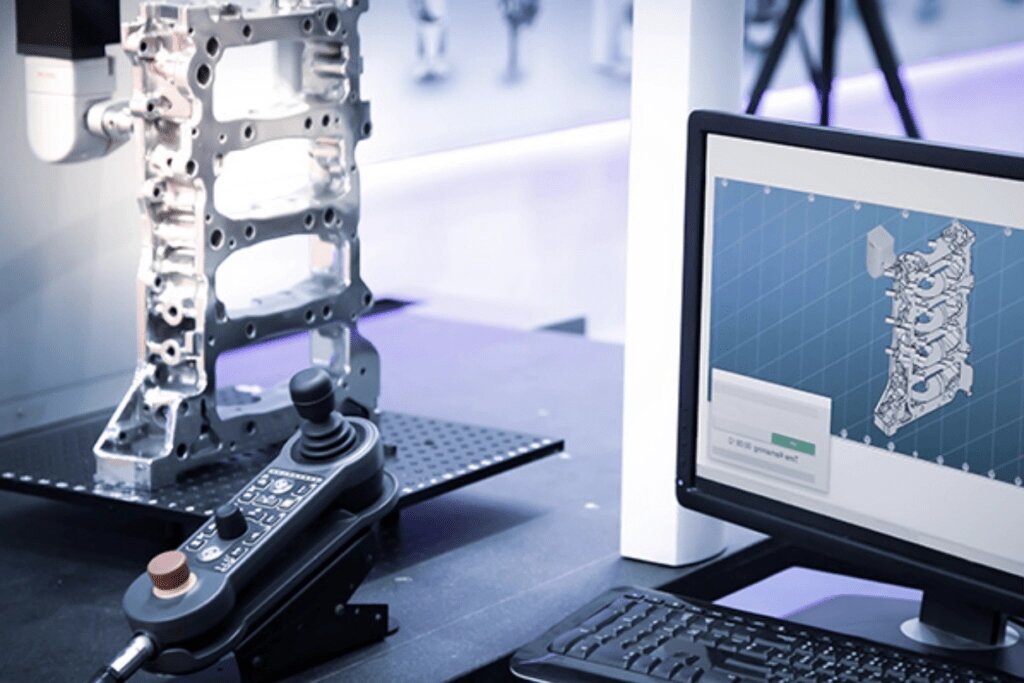
فهم عملية تصنيع المعادن
تصنيع المعادن في صميم العديد من الصناعات، من صناعة الطيران إلى صناعة السيارات. وهي تتضمن تحويل المواد الخام إلى أشكال ومنتجات محددة باستخدام عمليات مختلفة مثل القطع واللحام والختم والتجميع. ولكن ما الذي يدخل في هذه العملية بالضبط؟
ما هو تصنيع المعادن؟
تصنيع المعادن هو عملية تصنيع الهياكل والمكونات المعدنية من المواد الخام. وتتضمن عادةً تشكيل المعادن وقطعها وتجميعها لتشكيل الأجزاء المستخدمة في الصناعات المختلفة. واعتماداً على المواصفات، يمكن أن تتراوح هذه العملية من المشاريع الصغيرة المخصصة إلى عمليات الإنتاج على نطاق واسع.
العمليات الرئيسية المعنية: القطع واللحام واللحام والختم والتجميع
- القطع: تقسيم الصفائح أو الكتل المعدنية إلى قطع أصغر باستخدام أدوات مثل الليزرأو قواطع البلازما أو المقصات.
- اللحام: لحام يربط القطع المعدنية معاً عن طريق صهر الحواف ودمجها. وهذا أمر بالغ الأهمية لإنشاء هياكل قوية ومتينة.
- ختم: ختم تتضمن تشكيل أو قطع المعدن إلى أشكال محددة مسبقًا باستخدام القوالب والمكابس. تُستخدم هذه العملية غالباً للإنتاج بكميات كبيرة وتضمن اتساق أحجام الأجزاء.
- حَشد: تتضمن الخطوة الأخيرة تجميع المكونات المصنعة و تجميع في منتج كامل.
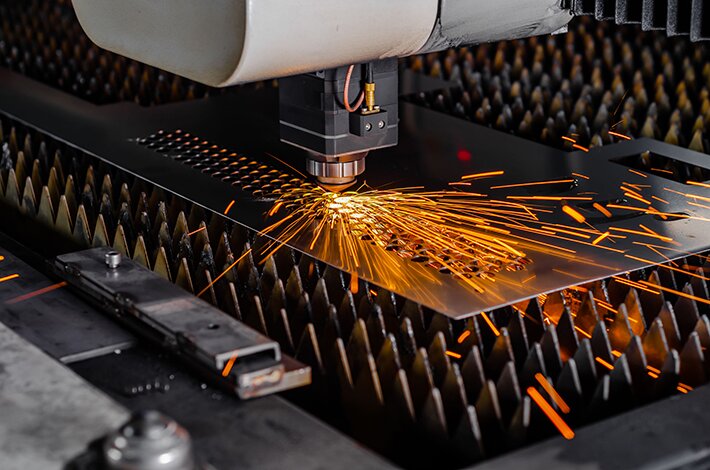
مرحلة النماذج الأولية: وضع الأساس للإنتاج
النماذج الأولية هي أساس أي مشروع ناجح لتصنيع المعادن. فهو المكان الذي تتبلور فيه الأفكار، ويتم فيه تحديد المشاكل المحتملة قبل أن تصبح مشاكل مكلفة. دعنا نستكشف سبب أهمية النماذج الأولية، وكيفية اختيار الطريقة الصحيحة، وما هي المواد التي تعمل بشكل أفضل.
أهمية النماذج الأولية في تصنيع المعادن
النماذج الأولية أكثر من مجرد إنشاء نموذج - إنها خطوة حاسمة في ضمان عمل تصميمك على النحو المنشود.
تحديد عيوب التصميم في وقت مبكر
يتيح لك النموذج الأولي اختبار تصميمك في ظروف العالم الحقيقي. يمكنك اكتشاف المشاكل مثل الوصلات الضعيفة أو سوء التركيب أو الأشكال الهندسية غير الفعالة قبل الانتقال إلى الإنتاج. إصلاح هذه المشاكل في وقت مبكر يوفر الوقت والمال.
توفير التكاليف وكفاءة العمليات
تساعدك النماذج الأولية على تحسين تصميمك من أجل قابلية التصنيع. ومن خلال تنقيح النموذج الأولي، يمكنك تقليل هدر المواد وتبسيط التجميع وتبسيط عمليات الإنتاج، مما يؤدي إلى خفض التكاليف وتسريع أوقات التسليم.
اختيار طريقة النماذج الأولية المناسبة
تعتمد طريقة وضع النماذج الأولية التي تختارها على مدى تعقيد مشروعك وجدوله الزمني وميزانيته.
النماذج الأولية السريعة
استخدامات النماذج الأولية السريعة الطباعة ثلاثية الأبعاد أو التصنيع باستخدام الحاسب الآلي لإنشاء نموذج مادي من تصميم رقمي بسرعة. وهو مثالي لاختبار الشكل والملاءمة والوظيفة.
- مزايا: تسليم سريع وفعال من حيث التكلفة للدفعات الصغيرة.
- أفضل ل: التحقق من صحة التصميم في المرحلة المبكرة.
التصنيع باستخدام الحاسب الآلي باستخدام الحاسب الآلي مقابل التصنيع الإضافي
- التصنيع باستخدام الحاسب الآلي: يستخدم طرق الطرح لنحت نموذج أولي من كتلة معدنية صلبة. وهي دقيقة وتعمل بشكل جيد للنماذج الأولية الوظيفية.
- التصنيع المضاف (الطباعة ثلاثية الأبعاد): يبني النموذج الأولي طبقة تلو الأخرى. وهي أسرع في الأشكال الهندسية المعقدة ولكنها قد تفتقر إلى قوة الأجزاء المشكّلة آلياً.
اختيار المواد للنماذج الأولية
تؤثر المواد التي تختارها لنموذجك الأولي على أدائه وتكلفته وجدواه.
المواد الشائعة المستخدمة
- الألومنيوم: خفيف الوزن ومقاوم للتآكل وسهل التشغيل الآلي. مثالية للنماذج الأولية لصناعة الطيران والسيارات.
- فُولاَذ: قوي ومتين ومناسب للتطبيقات الصناعية.
- الفولاذ المقاوم للصدأ: تتميز بمقاومة ممتازة للتآكل، وهي مثالية للنماذج الأولية الطبية أو الغذائية.
- النحاس والنحاس: تستخدم للمكونات الكهربائية أو الأجزاء الزخرفية.
خصائص المواد التي يجب مراعاتها
- وظائف: هل تفي المادة بمتطلبات أداء النموذج الأولي؟
- يكلف: هل المادة فعالة من حيث التكلفة لأغراض الاختبار؟
- القدرة على التصنيع: هل يمكن تشكيل المادة أو تعديلها بسهولة؟
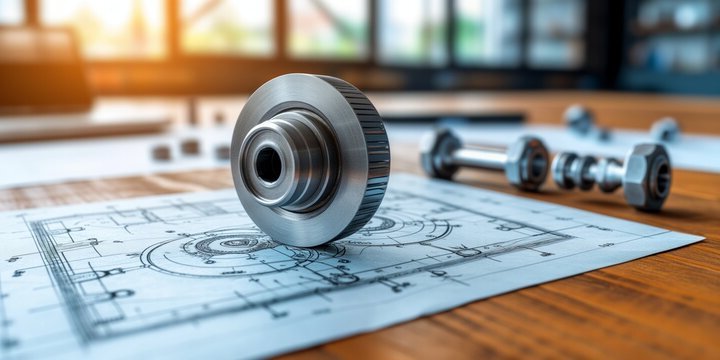
الخطوات المتضمنة في عملية الانتقال من النموذج الأولي إلى الإنتاج
يعد الانتقال من النموذج الأولي إلى الإنتاج رحلة منظمة تتطلب تخطيطًا وتنفيذًا دقيقًا. تضمن كل خطوة أن يكون منتجك جاهزًا للسوق. دعنا نقسم العملية إلى مراحل قابلة للتنفيذ.
الخطوة 1: إنشاء نموذج نموذج أولي رقمي
النموذج الأولي الرقمي هو المخطط الأولي لمنتجك المادي. فهو يساعدك على تصور تصميمك وصقله قبل بدء التصنيع.
النماذج الأولية المفاهيمية
تركز هذه المرحلة على تحويل الأفكار إلى نموذج رقمي أساسي. استخدم برنامج CAD ثلاثي الأبعاد لإنشاء تصميم تقريبي يحدد شكل المنتج وميزاته.
- غاية: التحقق من صحة المفهوم الأساسي.
- أدوات: الرسم التخطيطي والنمذجة ثلاثية الأبعاد الأساسية.
النماذج الأولية للميزات
بمجرد الموافقة على المفهوم، أضف الميزات التفصيلية إلى النموذج. ويشمل ذلك الأبعاد والتفاوتات والعناصر الوظيفية.
- غاية: صقل التصميم من أجل الأداء الوظيفي.
- أدوات: أدوات محاكاة برمجيات CAD المتقدمة.
النماذج الأولية التطورية
بناءً على الملاحظات والاختبارات، قم بتكرار التصميم وإجراء تعديلات لتحسين الأداء وقابلية التصنيع وتجربة المستخدم.
- غاية: تحسين التصميم للإنتاج.
- أدوات: برامج التصميم بمساعدة الحاسوب، وأدوات النماذج الأولية (CNC، والطباعة ثلاثية الأبعاد).
الجدول الزمني المقدر لإنشاء النماذج الأولية
- النماذج الأولية المفاهيمية: من أسبوع إلى أسبوعين.
- النماذج الأولية للميزات: 2-4 أسابيع.
- النماذج الأولية التطورية: 4-6 أسابيع.
الخطوة 2: أبحاث السوق واختبار المنتج
قبل الالتزام بالإنتاج بكميات كبيرة، تحقق من جدوى منتجك ووظائفه في السوق.
اختبار الطلب على المنتج
قم بإجراء استبيانات أو مجموعات تركيز أو حملات تمويل جماعي لقياس الاهتمام. تأكد من وجود سوق لمنتجك قبل التوسع.
الأدوات وأخذ العينات والإصدار غير الإنتاجي
إنشاء الأدوات (القوالب، القوالب) لإنتاج دفعات صغيرة. اختبار هذه العينات لضمان استيفائها لمعايير الجودة.
- غاية: التحقق من قابلية التصنيع والجودة.
- المخرجات: مجموعة صغيرة من النماذج الأولية الوظيفية.
التأكد من أن النموذج الأولي جيد للإنتاج بكميات كبيرة
اختبر النموذج الأولي في ظل ظروف العالم الحقيقي. تحقق من المتانة والأداء وسهولة التجميع. قم بإجراء التعديلات حسب الحاجة.
الخطوة 3: الانتقال إلى الإنتاج منخفض الحجم
يعمل الإنتاج منخفض الحجم على سد الفجوة بين النماذج الأولية والتصنيع على نطاق كامل.
إعداد المستندات المطلوبة
- الرسومات الفنية.
- قائمة المواد (BOM).
- خطط مراقبة الجودة.
مهلة زمنية مثالية
بالنسبة للإنتاج منخفض الحجم، خطط لمدة 2-4 أسابيع. وهذا يتيح الوقت لإعداد الأدوات، وتحديد مصادر المواد، وفحص الجودة.
إجمالي ميزانية التصنيع
ضع في الحسبان تكاليف المواد والعمالة والأدوات والنفقات العامة. تأكد من توافق الميزانية مع استراتيجية التسعير الخاصة بك.
تقديم منتجات للإنتاج
تسليم التصميمات والمواصفات النهائية إلى الشركة المصنعة. حافظ على التواصل الواضح لتجنب سوء الفهم.
إطلاق المنتج
بمجرد اكتمال الإنتاج، قم بتوزيع المنتج على السوق المستهدف. راقب ردود الفعل وكن مستعداً لإجراء التحسينات.
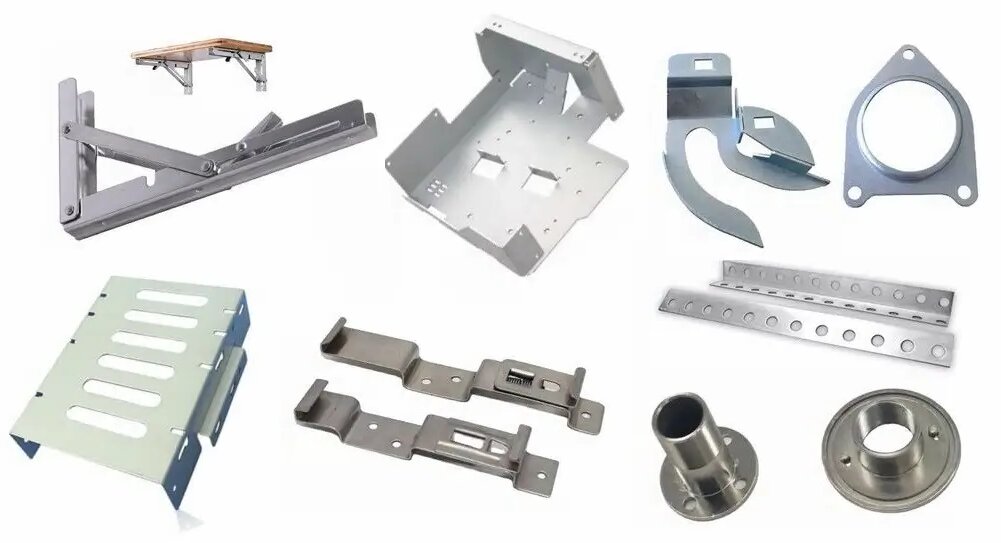
الانتقال من النموذج الأولي إلى الإنتاج
يعد تحويل النموذج الأولي إلى إنتاج ضخم مرحلة حرجة تتطلب تخطيطًا وتنفيذًا دقيقًا. حيث يلتقي التصميم الخاص بك مع قيود التصنيع في العالم الحقيقي. دعنا نستكشف العوامل الرئيسية التي يجب أخذها في الاعتبار والتعديلات اللازمة لضمان الانتقال السلس.
توسيع نطاق النماذج الأولية إلى الإنتاج الضخم
يتضمن الانتقال من النموذج الأولي إلى الإنتاج الضخم أكثر من مجرد زيادة الكميات. فهو يتطلب تقييم قدرات الإنتاج واتخاذ قرارات استراتيجية.
العوامل الرئيسية التي يجب مراعاتها عند الانتقال إلى الإنتاج
- قابلية التصنيع: ضمان إمكانية إنتاج تصميمك بكفاءة على نطاق واسع. تبسيط الأشكال الهندسية المعقدة وتوحيد المكونات.
- توافر المواد: التأكد من توفر المواد بسهولة بالكميات المطلوبة.
- فعالية التكلفة: تحسين العمليات لتقليل الهدر وخفض تكاليف الوحدة الواحدة.
- رقابة جودة: تنفيذ بروتوكولات اختبار وفحص صارمة للحفاظ على الاتساق.
قدرات الإنتاج واعتبارات الحجم
- إنتاج منخفض الحجم: مثالية لاختبار السوق أو إنتاج منتجات متخصصة. استخدام أساليب تصنيع مرنة مثل التصنيع باستخدام الحاسب الآلي.
- الإنتاج بكميات كبيرة: يتطلب أدوات مخصصة وعمليات مؤتمتة. ضع في اعتبارك القولبة بالحقن أو الختم لتحقيق الكفاءة.
التعديلات والتحسينات في التصميم
حتى أفضل النماذج الأولية غالباً ما تحتاج إلى تعديلات قبل أن تصبح جاهزة للإنتاج بكميات كبيرة.
تعديلات التصميم القياسية قبل الإنتاج
- التسامح: تشديد أو تخفيف التفاوتات المسموح بها بناءً على قدرات التصنيع.
- سمك المادة: ضبط السماكة لتحسين المتانة أو تقليل الوزن.
- عمليات التجميع: تبسيط التجميع عن طريق تقليل عدد الأجزاء أو استخدام تصميمات معيارية.
- التشطيبات السطحية: حدد التشطيبات التي تعزز الأداء الوظيفي أو الجماليات، مثل الطلاء بالمسحوق أو الطلاء بأكسيد الألومنيوم.
لماذا التكرار ضروري لنجاح المنتج؟
يضمن لك التكرار تلبية منتجك لأهداف الأداء والجودة والتكلفة.
- أداء: يكشف الاختبار عن نقاط الضعف التي يمكن معالجتها قبل التوسع.
- يكلف: يقلل تنقيح التصميم من هدر المواد ووقت الإنتاج.
- تجربة المستخدم: تساعد التعليقات الواردة من النماذج الأولية على تحسين قابلية الاستخدام والوظائف.
خاتمة
يعد الانتقال من النموذج الأولي إلى الإنتاج مرحلة حاسمة في إخراج منتجك إلى الحياة. من خلال التخطيط الدقيق لعملية التحجيم، وإجراء التعديلات اللازمة على التصميم، وتحسين طرق الإنتاج، يمكنك ضمان أن يكون المنتج النهائي عالي الجودة وفعال من حيث التكلفة.
عندما تكون مستعداً للانتقال بمنتجك من النموذج الأولي إلى الإنتاج الكامل، تأكد من وجود شريك موثوق يفهم الفروق الدقيقة في التصنيع على نطاق واسع.
هل أنت مستعد لبث الحياة في تصميمك؟ اتصل بنا اليوم لمناقشة مشروعك وكيف يمكننا مساعدتك في الانتقال بسلاسة من النموذج الأولي إلى الإنتاج!
مهلا، أنا كيفن لي

على مدى السنوات العشر الماضية، كنت منغمسًا في أشكال مختلفة من تصنيع الصفائح المعدنية، وشاركت رؤى رائعة هنا من تجاربي عبر ورش العمل المتنوعة.
ابقى على تواصل

كيفن لي
لدي أكثر من عشر سنوات من الخبرة المهنية في تصنيع الصفائح المعدنية، وتخصصت في القطع بالليزر، والثني، واللحام، وتقنيات معالجة الأسطح. كمدير فني في شنغن، أنا ملتزم بحل تحديات التصنيع المعقدة ودفع الابتكار والجودة في كل مشروع.

